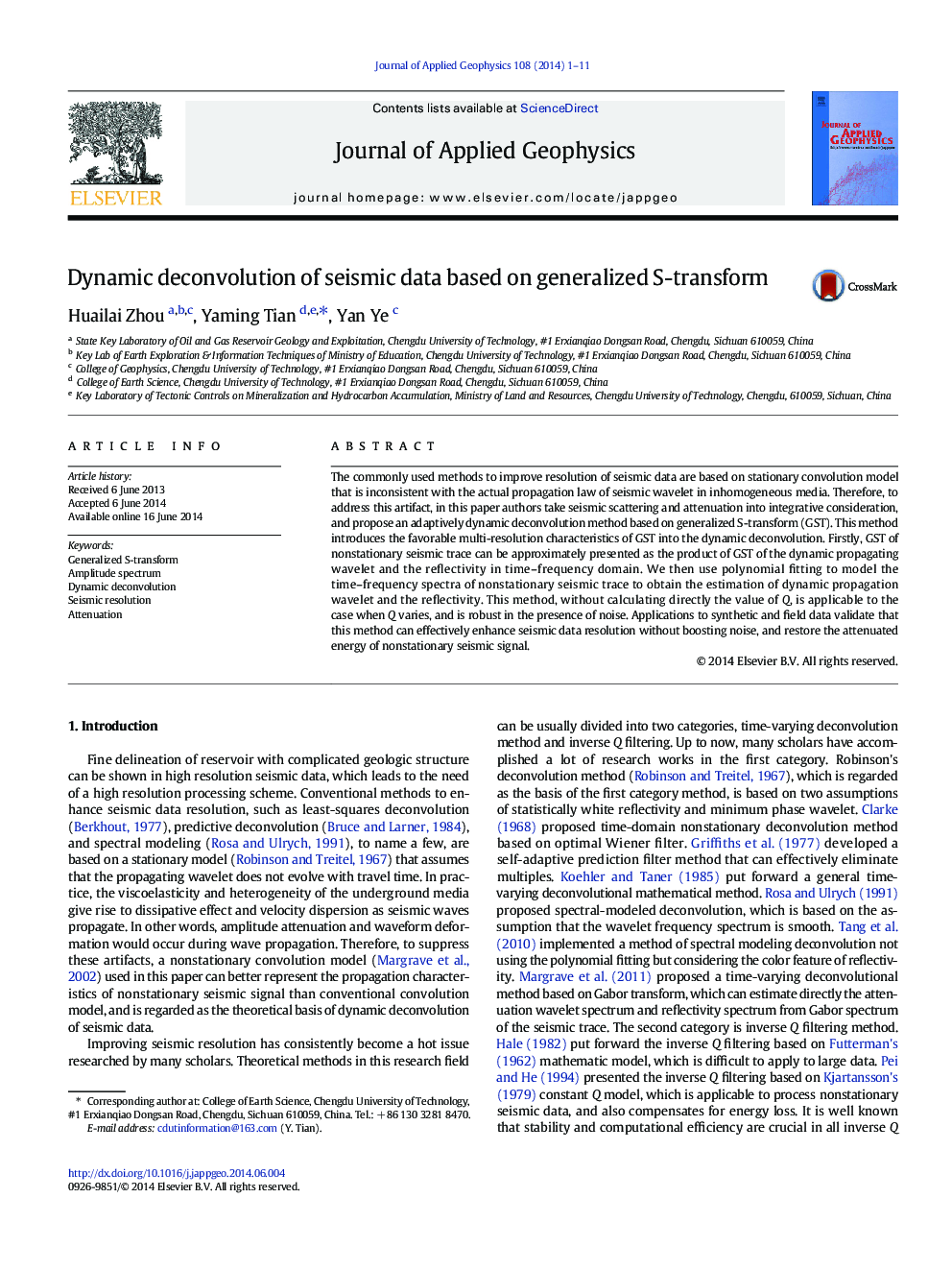| Article ID | Journal | Published Year | Pages | File Type |
|---|---|---|---|---|
| 4740058 | Journal of Applied Geophysics | 2014 | 11 Pages |
•We present a dynamic deconvolution method based on the generalized S transform.•We do not need to estimate the value of Q directly.•The method is adaptable and robust to process large seismic data.•The method enhances effectively seismic resolution without boosting noise.
The commonly used methods to improve resolution of seismic data are based on stationary convolution model that is inconsistent with the actual propagation law of seismic wavelet in inhomogeneous media. Therefore, to address this artifact, in this paper authors take seismic scattering and attenuation into integrative consideration, and propose an adaptively dynamic deconvolution method based on generalized S-transform (GST). This method introduces the favorable multi-resolution characteristics of GST into the dynamic deconvolution. Firstly, GST of nonstationary seismic trace can be approximately presented as the product of GST of the dynamic propagating wavelet and the reflectivity in time–frequency domain. We then use polynomial fitting to model the time–frequency spectra of nonstationary seismic trace to obtain the estimation of dynamic propagation wavelet and the reflectivity. This method, without calculating directly the value of Q, is applicable to the case when Q varies, and is robust in the presence of noise. Applications to synthetic and field data validate that this method can effectively enhance seismic data resolution without boosting noise, and restore the attenuated energy of nonstationary seismic signal.
